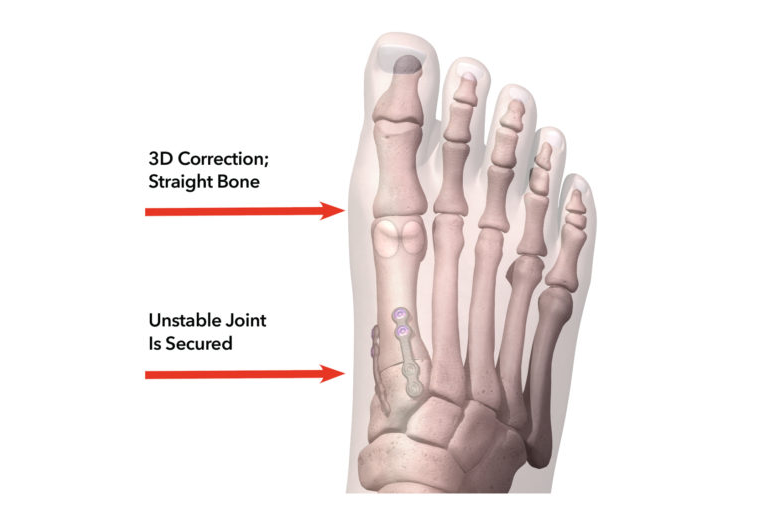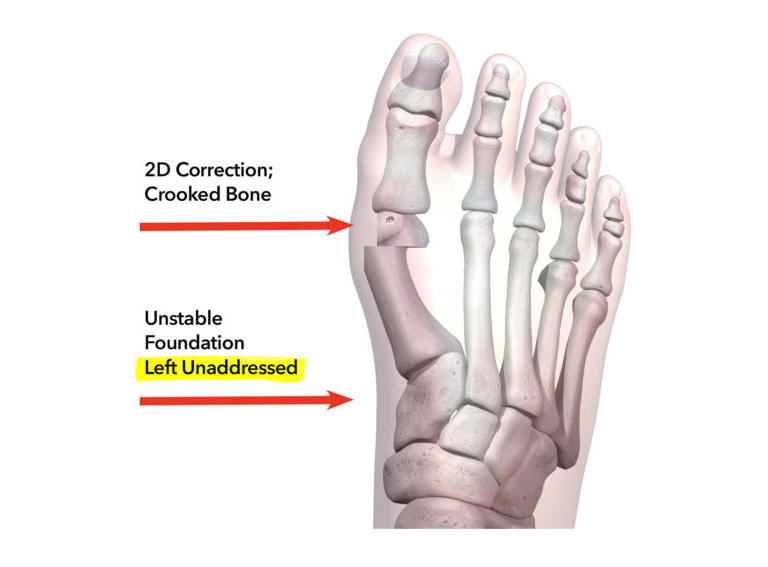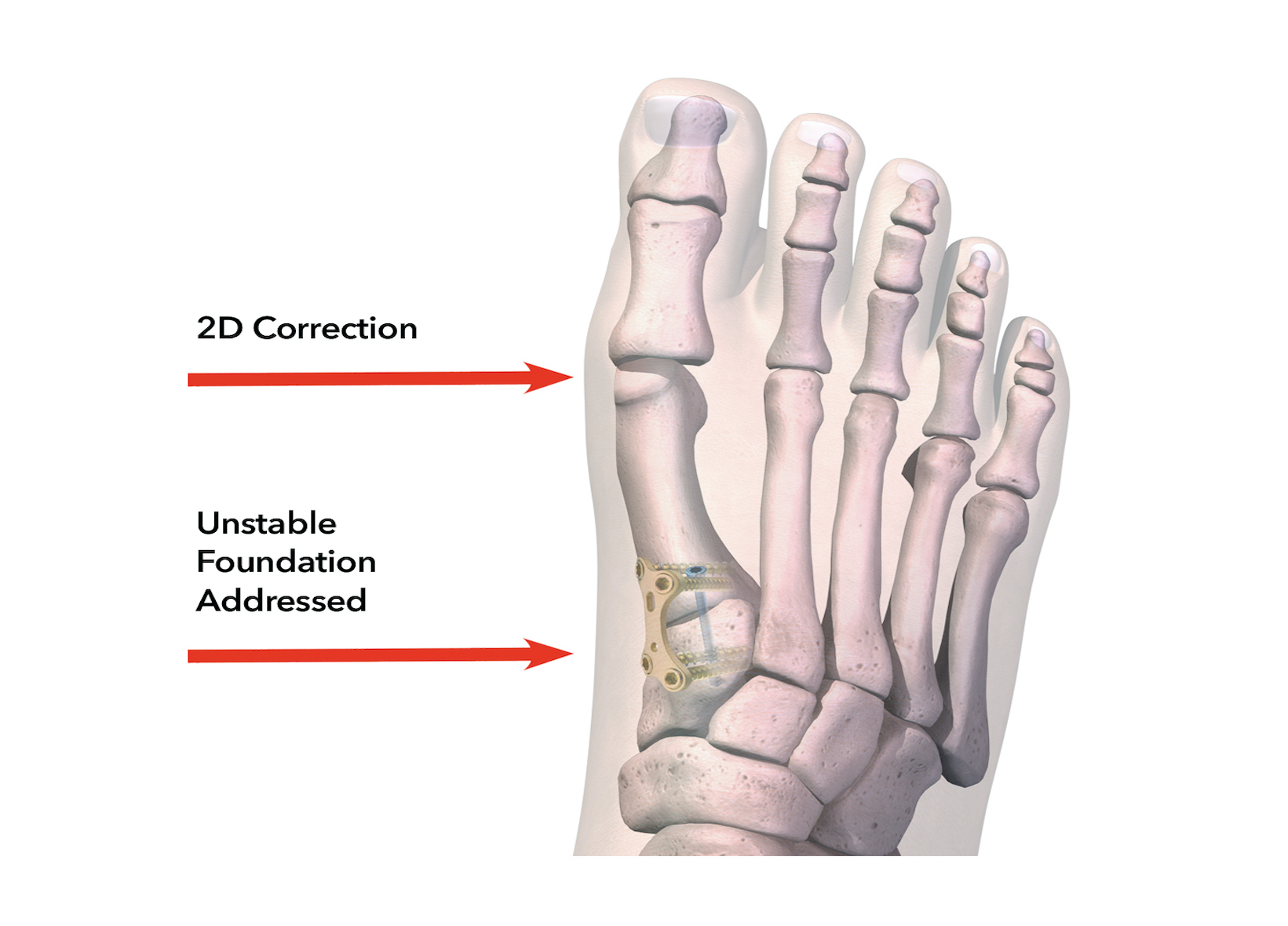-
Unnaturally cuts & shifts bone; only a 2D correction
-
Addresses cosmetic “bump”; not the root cause (unstable joint)
-
Smaller incisions makes the surgery more technically challenging
Minimally invasive (MIS) osteotomy surgery performs the same 2D osteotomy (i.e. breaks the metatarsal bone) that is associated with high bunion recurrence rates1, just through smaller incisions. This approach can create an, artificial shift in the bone and does not address the root cause of the bunion – an unstable joint. Further, performing the surgery through small incisions makes it much more technically challenging; it’s like building a ship in a bottle. Minimally invasive bunion surgery was originally attempted in the 1980s in the US and extinguished in part due to high variability of outcomes and complication rates.2,3
– Podiatry Today Website, Feb 01, 2020. Vol 33 Num 2
– Chicago Tribune Website, Jan 4, 1989

Hear What the Experts Say
MIS osteotomies are still 2D corrections, just much more challenging to perform
“But when you look at the known advantages of open traditional surgery, [one of them is] you can see what you are doing; you cannot see anything with MIS. You have to guess the alignment when you’re doing this percutaneously.4”
– DiMarcantonio T. Orthop Today Int 10(5):13–16, 2007 .
*Physician is a paid consultant of Treace Medical Concepts, Inc.
*Physician is a paid consultant of Treace Medical Concepts, Inc.
Hear What the Experts Say
How does the Lapiplasty® Mini-Incision™ approach compare to MIS osteotomies? Learn more from JP McAleer, DPM Jefferson City, MO






